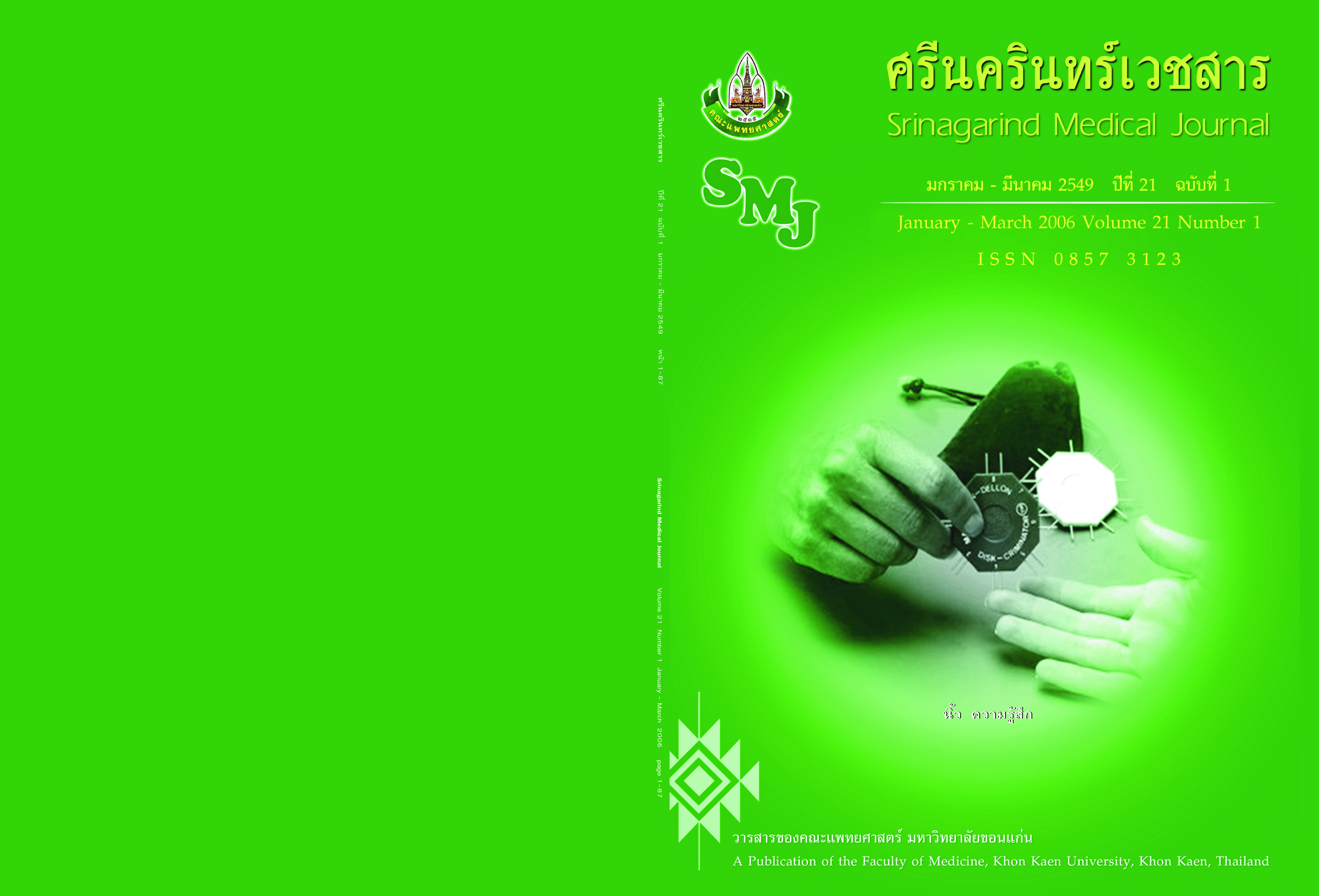Reliability of the compasses for measuring two-point discrimination and moving two-point discrimination test compared with the Disk-criminator
Abstract
Background. : The point and moving two-point discrimination are the useful test for the patients who had nerve injuries in the hand and for following up after nerve recovery. The compasses are cheap and available instrument for those tests. But there was no study showing the reliability of the compasses compared with the Disk-criminator.
Objective: To assess reliability of the compasses for measuring two-point discrimination and moving two-point discrimination test compared with Disk-criminator
Study design: Prospective, descriptive study
Materials and Methods: The static and moving two-point discrimination test of the thumb and long fingers of the dominant hand were done in the healthy volunteers aged 20-27 years. The compasses and the disk-criminator were used by two orthopedic residents in this study. The test was performed two times 1-2 weeks interval. The Pearson’s correlation coefficient and limit-agreement were used to analyze the reliability of inter- and intra-observers comparing between compasses and the disk-criminator.
Results: The means inter-observer correlation coefficient for the two-point discrimination test using the compasses and the disk-criminator were 0.73 (0.69-0.76), and 0.72 (0.69-0.75) respectively. The means intra-observer correlation coefficient for the two-point discrimination test using the compasses and the disk-criminator were 0.73 (0.65-0.82), and 0.82 (0.81-0.83) respectively. The means limit agreement of the two- observer for the two-point discrimination test using the compasses and the disk-criminator were 89.1% (86.7%-91.4%), and 86.9% ( 86.3%-87.5%) respectively. The means limit agreement of the same observer for the two-point discrimination test using the compasses and the disk-criminator were 95.7% (94.5%-96.9%), and 93.9% (92.6%-95.3%) respectively.
Conclusion: For two-point discrimination and moving two-point discrimination, the compasses had a high intra-observer reliability similar to the Disk-criminator. It had moderate inter-observer reliability similarly to the Disk-criminator. Using a clinically acceptable error of 1mm, the study found that the compasses had the high limit agreement similar to the Disk-criminator, both in the same observer or between two observers.




